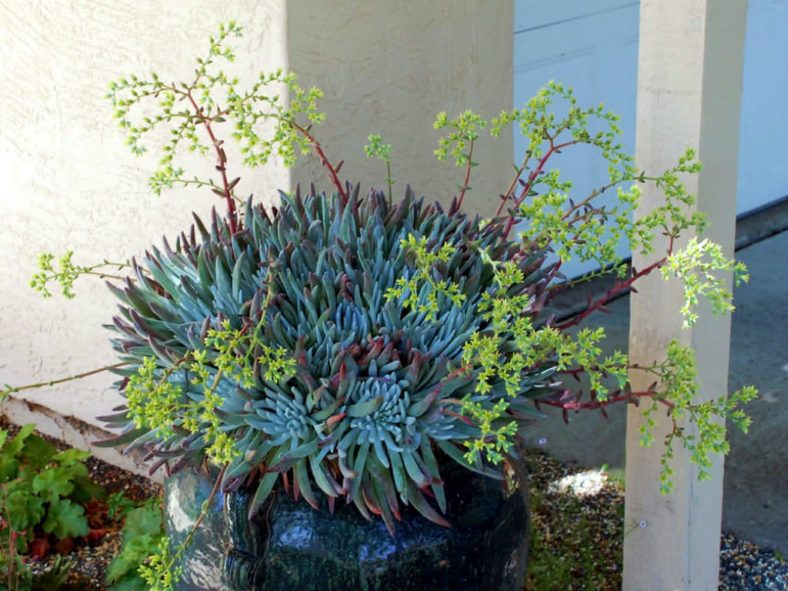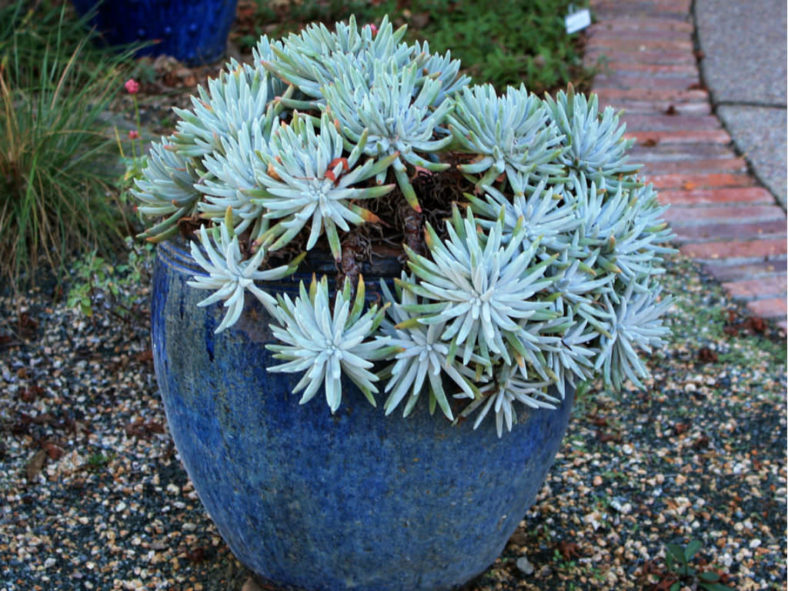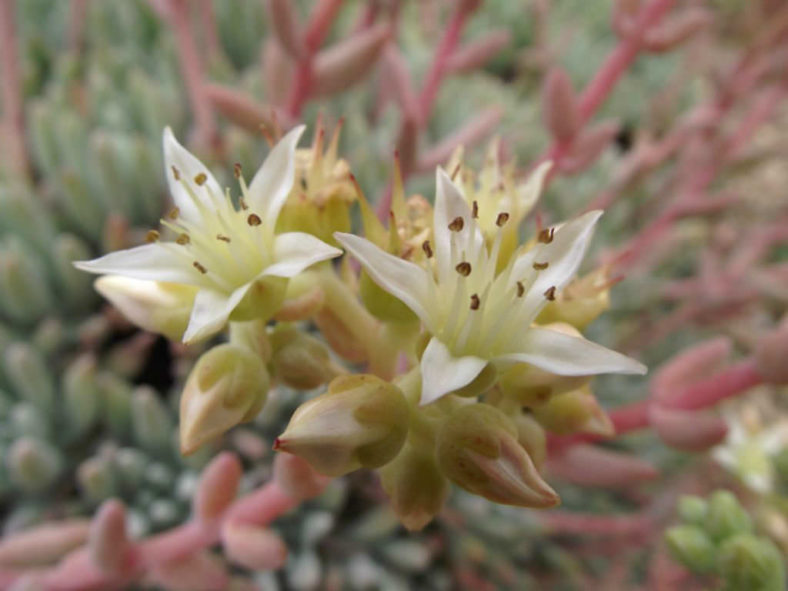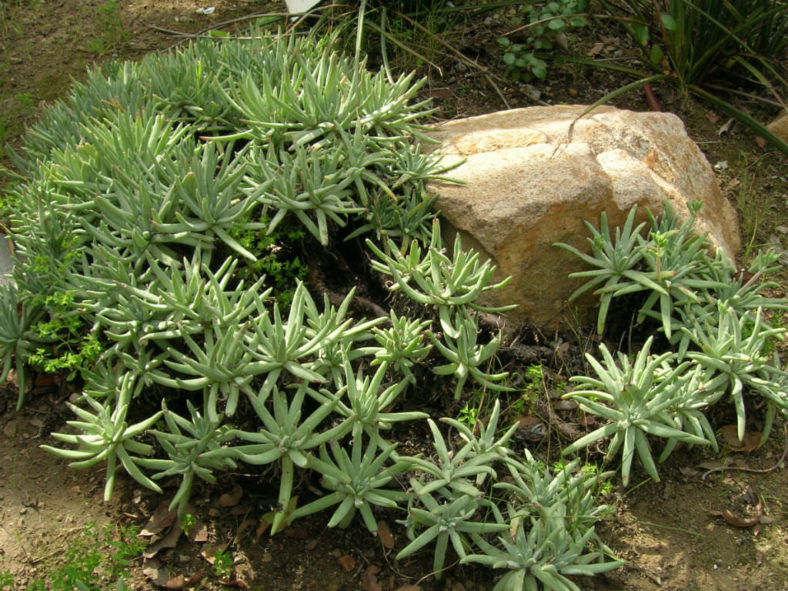Scientific Name
Dudleya virens subsp. hassei (Rose) Moran
Common Name(s)
Catalina Island Liveforever
Synonym(s)
Dudleya hassei, Echeveria hassei
Scientific Classification
Family: Crassulaceae
Subfamily: Sempervivoideae
Tribe: Sedeae
Genus: Dudleya
Origin
Dudleya virens subsp. hassei is native to Catalina Island, California, United States.
Description
Dudleya virens subsp. hassei is a richly branched succulent with caudices that bear rosettes of farinose or rarely green leaves. The rosettes can grow up to 3.2 inches (8 cm) in diameter. The leaves are linear, erect, or curving outwards, measuring up to 6 inches (15 cm) long and 0.4 inches (1 cm) wide.
The flowers are star-shaped, up to 0.8 inches (2 cm) across, and appear in clusters on branched inflorescences that can grow up to 12 inches (30 cm) long in late spring. They are white with keels marked rosy or not.

Hardiness
USDA hardiness zones 9b to 11b: from 25 °F (−3.9 °C) to 50 °F (+10 °C).
How to Grow and Care
Most of the various habitats Dudleyas occupy become dry in summer. Therefore, cutting off water to Dudleyas in your garden during the summer is important. Plants grown in sandy soils or containers are exceptions. They will accept infrequent summer watering as long as the soil drains well. The onset of fall or winter rains reawakens Dudleyas from drought-induced dormancy. Their shriveled leaves plump up quickly, growth resumes, and flowering occurs during the following spring or summer. These plants are amazingly resilient. If a portion of a colony sloughs off a cliff face or is uprooted by a burrowing animal, it can persist for months until soil contact is re-established. Species that naturally grow on ocean bluffs are also salt-spray tolerant.
Dudleyas have their share of disease and pest problems. However, if you can prevent Argentine Ants from introducing mealybugs or aphids to your Dudleyas, they will be healthier. Mealybugs nestle in the deep recesses of the leaves, and their feeding weakens the plants.
Learn more at How to Grow and Care for Dudleya.
Links
- Back to genus Dudleya
- Succupedia: Browse succulents by Scientific Name, Common Name, Genus, Family, USDA Hardiness Zone, Origin, or cacti by Genus
Photo Gallery
Click on a photo to see a larger version.



